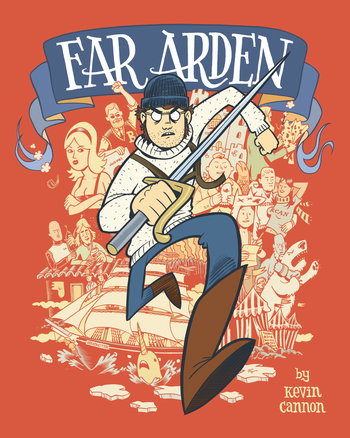My friend Big Brain pointed out Tamara Drewe, a graphic novel, to me when I was in the comic shop last week.

I’d heard of the film (which has received mostly mediocre reviews) but he said the GN was well reviewed, which is almost understatement when I looked at the blurbs on the back. They are from reputable sources and aren’t stinting in their praise.
Posy Simmonds is a graphic artist who has done children’s books, this and a previous graphic novel, Gemma Bovery, and more. Tamara Drewe the book is a modern retelling of Thomas Hardy’s Far From the Madding Crowd. The setting is the English countryside, at a retreat for writers. I haven’t read the Hardy, but am now interested in it because of this engaging homage.
Simmonds combines the art, prose passages, faux tabloid excerpts and word bubbles to great effect. This is absolutely a whole that is more than the sum of its parts, in other words, a skilled execution of the medium of the graphic novel, made all the more engaging by its involving story and broad cast of characters.
Tamara of the title tempts all the men when she returns to the neighborhood. She begins a rocky relationship, but continues to attract attention from the men and bored teens in the neighborhood. Other’s stories circle around hers. Beth oversees the writers retreat, while her novelist husband Nicholas earns fame and money to make it popular. One of the residents, Glen, is long at work on his academic novel. Local Andy Cobb is trying to start an organic farm, and helps out on the grounds of the retreat. Two local girls, Casey and Jody, goggle at Tamara and her boyfriend and get into a variety of trouble.
Having recently read two 19th century novels, Villette and Madame Bovary, I found this work very much in the same spirit. Many characters, many characters, with crossovers and coincidences tying everything together in complex and interesting ways. Unlike the other two books, though, it didn’t contain any digs at the Jesuits. It’s beautifully illustrated, and is much more than an illustrated novel. Highly recommended, and I’ll be seeking out both Simmonds’ other work and potentially the Hardy because of it.
One piece of minutiae: Glen Larson is an American, yet used two phrases that didn’t ring true to me. He called his sweaters “knits” at one point, and referred to himself a few times as a “pantyhose.” If the latter is indeed English slang (I thought it was pantywaist, not pantyhose) then both are easily explained as Glen picking up English slang while he’s there. But if were speaking American, he would say sweaters and refer to himself as a douchebag.
Another, and this is me being especially nerdy. The main character’s name reminded me of Nancy Drew, one of the fictional characters for whom I took the name of this weblog. Glen’s last name is Larson, the same as Glen A. Larson, the man who produced the Nancy Drew and Hardy Boys mystery show that was a huge cultural moment of my childhood. A strange coincidence?
A third thing that struck me: the heroine of Hardy’s novel is Bathsheba Everdene. I’m currently reading The Hunger Games, whose main character is Katniss Everdeen. Again, strange coincidence, or just mega-geekery on my part?



